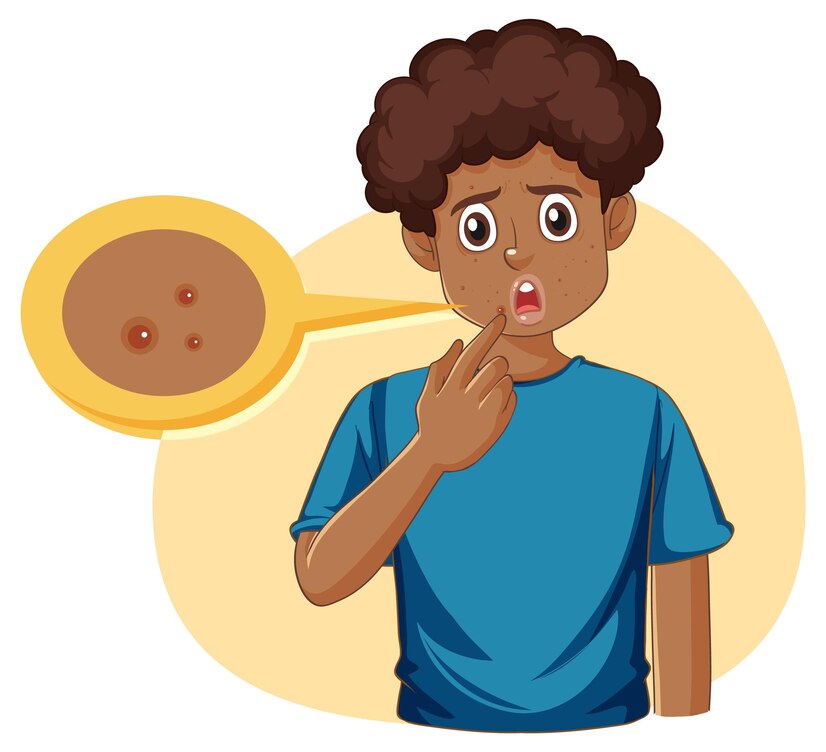
Understanding the Contrast: Seborrheic Contact Eczema vs. Other Eczema Types
Introduction to Seborrheic Contact Eczema
Eczema is a common skin condition that causes inflammation, itching, and irritation. Among the many types, seborrheic contact eczema is one that stands out. While it shares some characteristics with other forms of eczema, it also has unique features. In this article, we will explore how seborrheic contact eczema differs from other types of eczema and how to manage it.
What is Seborrheic Contact Eczema?
Seborrheic contact eczema is a condition that causes redness, itching, and flaking. It typically affects areas of the skin that are oily, like the scalp, face, and chest. This condition results from a combination of genetic, immune system, and environmental factors. Additionally, exposure to irritants or allergens can worsen the symptoms.
Symptoms of Seborrheic Contact Eczema
Common symptoms of seborrheic contact eczema include:
- Itching and Redness: The affected areas become inflamed and itchy.
- Flaky, Scaly Patches: You may notice white or yellowish flakes on the skin.
- Cracked Skin: Over time, the skin may crack, increasing discomfort and the risk of infection.
How Does Seborrheic Contact Eczema Differ from Other Types of Eczema?
Although seborrheic contact eczema shares some symptoms with other types, it has distinct differences. Let’s compare it with other common forms of eczema.
Atopic Dermatitis (Eczema)
Atopic dermatitis, also called eczema, causes dry, itchy patches on the skin. Unlike seborrheic contact eczema, it can appear anywhere on the body. Atopic dermatitis often occurs in childhood and is linked to other conditions like asthma and hay fever.
Contact Dermatitis
Contact dermatitis happens when the skin reacts to an irritant or allergen. It can cause redness, swelling, and itching. However, seborrheic contact eczema is different because it involves both seborrheic dermatitis and allergic reactions, causing additional symptoms like flaking.
Nummular Eczema
Nummular eczema presents as round, coin-shaped patches of inflamed skin. It may cause oozing or crusting. Unlike seborrheic contact eczema, it typically occurs on drier areas like the arms or legs, rather than on oily areas.
Seborrheic Contact Eczema vs. Seborrheic Dermatitis
Seborrheic contact eczema and seborrheic dermatitis are often confused, but they are distinct. Seborrheic dermatitis is mainly caused by an overgrowth of yeast, while seborrheic contact eczema is triggered by both seborrheic factors and allergens or irritants.
Treatment Options for Seborrheic Contact Eczema
Several treatments can help manage seborrheic contact eczema:
- Topical Steroids: These can reduce inflammation and itching. Use them carefully to avoid skin thinning.
- Antifungal Creams: These are helpful if a fungal infection is present.
- Moisturizers: Keeping the skin hydrated is essential. Choose fragrance-free products for sensitive skin.
- Avoiding Triggers: Identify and avoid allergens or irritants that worsen the condition.
- Immunosuppressive Medications: For severe cases, immunosuppressive medications may be necessary to control inflammation.
Conclusion
In conclusion, while seborrheic contact eczema shares some similarities with other types of eczema, it has unique characteristics. Understanding these differences helps with proper diagnosis and treatment. If you experience symptoms of eczema, it’s important to consult with a healthcare professional for advice and management.
To seek medical advice, always consult a Doctor. Here are our recommended EXPERTS. Click here
To read more on SKIN. Click Here


